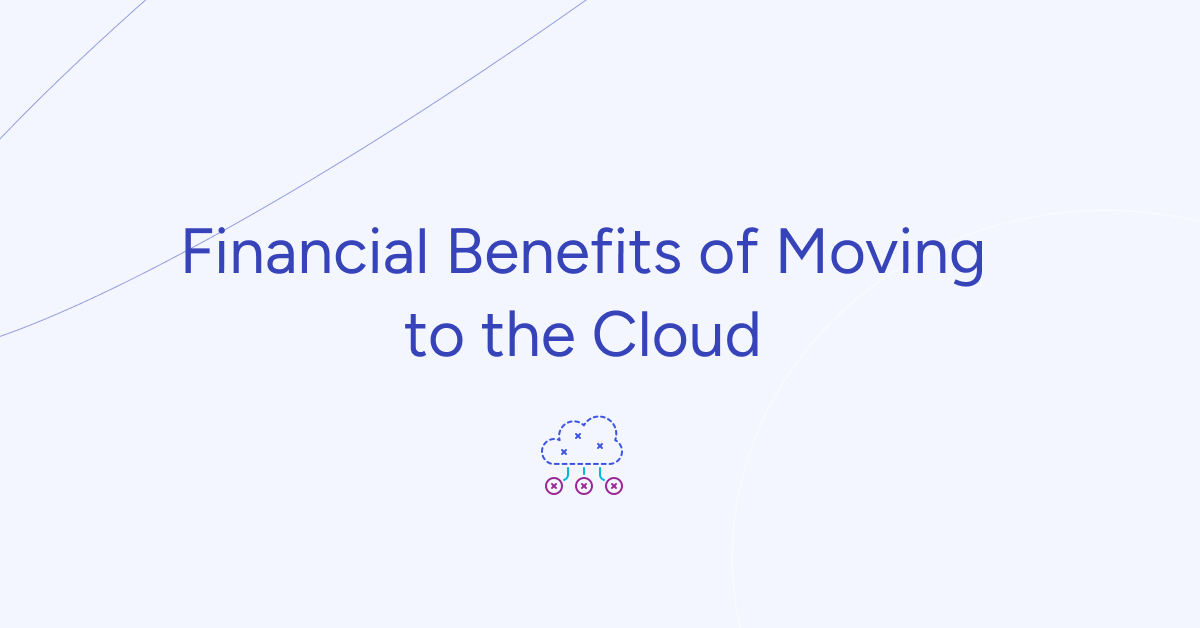
AWS cloud migration. The continuity and even the survival of any company's business operations heavily depend on the reliability of its IT infrastructure. However, no on-premise architecture can fulfill the required conditions.
[lwptoc]
Presently, this challenge has become a major catalyst for significant transformations in how clients perceive and adopt cloud services. Particularly, internet-based businesses, financial institutions, logistics companies, and other enterprises are keenly experiencing the necessity to swiftly scale their computing capabilities while minimizing additional costs.
Embracing Cloud Solutions for Resource Optimization
Not too long ago, the concept of "cloud services" was novel and unfamiliar to the majority of companies. Businesses were accustomed to relying on their own infrastructure, considering it sufficiently reliable and secure. However, they encountered issues that were either extremely challenging or practically unsolvable within their local data centers. The primary problem was the fluctuating availability of computing resources, with the occasional excess or shortage. Accurately estimating the required resources necessitated lengthy planning, and various types of businesses faced periods of significantly increased service load throughout the year.
For example, take any well-known online store. Each new promotion, marketing campaign, or product discount triggered a substantial influx of users, putting considerable strain on the servers running the platform.
This presented two core challenges: first, rapidly scaling the service to handle the increased load, and second, dealing with resource constraints when physical resources were insufficient. Creating service copies and employing load balancers proved to be more efficient and feasible with a microservices architecture.
Nonetheless, addressing the resource scarcity issue was more intricate, as acquiring new servers quickly was not a viable option. In cases where long-term resource planning fell short, promptly adding capacity became almost an impossible task. Consequently, service unavailability and significant financial losses were common occurrences. Even in instances of precise resource planning, the majority of the acquired additional resources remained largely underutilized.
Here comes the flexibility of public clouds to the rescue. Utilizing cloud services allows companies to pay only for the resources they actually use within specific time frames, and they have the ability to scale their consumption up or down at any moment. People often try to compare the cost of purchasing a physical server with renting resources in the cloud based solely on CPU, RAM, and Storage metrics, which is not entirely accurate. Of course, in such cases, using the cloud may appear to be expensive. However, many factors are not taken into account in such a comparison, such as the cost of consumed electricity, the salaries of technical specialists who manage these resources, physical and fire safety, and so on.
Ready to Accelerate Your Journey to the Cloud? Choose Gart as your trusted AWS migration partner for a seamless on-premise to AWS Cloud migration. Let's dive in!
Drivers for AWS Cloud Migration
Over the past few years, there has been a significant increase in companies' demand for cloud services, which is entirely logical considering the advantages that companies gain through AWS cloud migration. Businesses identify the following drivers that motivate them to migrate:
Establishing a resilient infrastructure
Gaining quick access to computing power and services
High level of flexibility in infrastructure management
Optimization and scalability
Leveraging innovative solutions such as IoT, ML, AI
Complexity and duration of implementing hardware solutions
Cost reduction through the use of cloud technologies
In summary, companies aspire to grow rapidly, enhance user experiences, implement digital transformation tools, and modernize their businesses. They reinvest the cost savings from infrastructure into developing their companies further.
Nearly every migration is a challenging undertaking.
Business Outcomes after Migration
Cloud technologies offer companies a range of advantages, including:
Cost reduction compared to on-premise solutions (31%)
Increased staff productivity and quick onboarding (62%)
Enhanced flexibility in implementing new services (75%)
However, migration projects for large companies are complex decisions that require a comprehensive approach, combining the application of specific services, methodologies, and expertise in chosen cloud technologies. Often, executing migration projects without proper management methodologies significantly complicates the process and substantially extends the project timelines.
At Gart, we transform the migration process into a well-managed and conscious journey by offering a proven methodology, as a leader among cloud providers, integrating technical solutions with the company's business objectives, and enhancing the competence of clients when working in cloud environments.
Moving forward, we will explore how to achieve a fast and effective migration to Amazon Web Services.
Don't miss this opportunity to embrace the limitless possibilities of AWS Cloud with Gart by your side!. Contact Us
AWS Migration Acceleration Program (MAP)
For any organization, the key performance indicators for the successful implementation of new technologies typically revolve around stability, high availability, and cost-effectiveness. Hence, it is crucial to assess the company's IT infrastructure and business processes' readiness for cloud migration. To facilitate this process, AWS offers a specialized program called the AWS Migration Acceleration Program (MAP).
It is important to note that this program may not be applicable to all clients. For instance, migrating a single virtual server is unlikely to meet the requirements of this offer. However, for medium and large-scale companies seriously considering the adoption of cloud services, this program will be highly beneficial.
In addition to the comprehensive approach to AWS cloud migration, the MAP program provides clients with a significant discount on resource usage for a duration of three years. The program comprises three main stages:
Assessment
Mobilization (testing)
Migration and modernization.
Assessment
During the assessment stage, the officially authorized AWS MAP partner conducts an inventory of the client's existing systems to develop a conceptual architecture for their migration to the cloud. A comprehensive business case is created, outlining how the infrastructure will look after the migration, the estimated cost for the client, and when it is advisable to transition from virtual machines to services. All client requirements regarding availability, resilience, and security are taken into account. Additionally, an evaluation of existing licenses, such as Oracle or Microsoft, is performed to determine whether it is beneficial to migrate them to the cloud or opt for renting them directly from the platform.
As a result, the client receives exhaustive information about migration possibilities and potential cost savings in the cloud. In some cases, these savings can reach up to 70%. Typically, the assessment stage takes 3-6 weeks, depending on the project's complexity.
Mobilization
During the testing stage, a test environment is deployed in the cloud based on the developed architecture to verify the proposed solutions evaluated during the assessment phase.
Migration and modernization
After conducting all the tests, we move on to the final stage of the AWS MAP. At this stage, the production infrastructure is deployed in the cloud, and its optimization takes place. However, it's essential to continuously analyze and optimize the infrastructure on a regular basis.
MAP AWS Benefits
The AWS Migration Acceleration Program (MAP) offers several benefits, including:
Comprehensive Assessment
Clients receive a thorough evaluation of their IT infrastructure and business processes to assess readiness for AWS cloud migration.
Cost Savings
The program provides significant discounts on resource usage for three years, helping clients save costs during their migration journey.
Conceptual Architecture
A well-defined conceptual architecture is developed for the cloud migration, outlining the post-migration infrastructure and estimated costs.
License Optimization
Existing licenses, such as Oracle or Microsoft, are evaluated to determine the most cost-effective approach for their migration or rental on the cloud platform.
Test Environment
A test environment is set up in the cloud to validate the proposed solutions and ensure a smooth migration process.
Production Deployment and Optimization
After successful testing, the production infrastructure is deployed in the cloud and continuously optimized for performance and efficiency.
Regular Analysis and Optimization
The MAP ensures that infrastructure analysis and optimization are conducted regularly to maintain peak performance and cost-effectiveness.
Migration Approach: Lift-and-Shift, Replatforming, or Refactoring
Selecting the right migration approach is a crucial step in the cloud migration process. There are three primary migration approaches to consider:
Lift-and-Shift
This approach involves migrating applications and workloads to the cloud with minimal changes. It is a quick and straightforward method but may not fully leverage the benefits of cloud-native services.
Replatforming
Replatforming, also known as lift-tinker-and-shift, involves making some optimizations and adjustments to the applications to take advantage of cloud services while minimizing significant code changes.
Refactoring
This approach involves rearchitecting and reengineering applications to be cloud-native, fully leveraging the benefits of cloud services, scalability, and agility.
The selection of the migration approach depends on factors such as application complexity, business goals, cost considerations, and the desired level of cloud-native functionality. Each approach has its trade-offs, and the right choice will depend on the specific needs and priorities of the organization's cloud migration journey.
In Conclusion: AWS Cloud Migration
If your organization is considering migrating to AWS and wants a smooth and efficient migration process, look no further than Gart. We can provide you with a comprehensive assessment, a well-defined migration plan, and cost-effective solutions. Whether you choose the lift-and-shift, replatforming, or refactoring approach, our team will guide you every step of the way to ensure a successful cloud migration. Take the next step towards unlocking the full potential of AWS and contact Gart today for a seamless transition to the cloud.
Read more: Cloud vs. On-Premises: Choosing the Right Path for Your Data
Navigate the cloud with confidence! Our Cloud Consulting experts provide tailored solutions for migration, scalability, and security. Ready to elevate your business? Get in touch for a transformative consultation.

The shift to the cloud is more than a technological choice—it's a crucial transformation shaping the way organizations operate.
Your organization's objectives and business results play a pivotal role in shaping your approach to financial matters. The cloud can enhance the flexibility of your IT cost structure.
Today we'll provide insights to help you construct a compelling business case for migrating to the cloud.
Financial Considerations in Cloud Transformation
There are several crucial factors that shape the success of cloud migration journey:
Cloud Pricing Models and CAPEX to OPEX Shift
CapEx and OpEx expenditures differ across various aspects, encompassing their treatment for tax, financial, and operational reporting. Let's explore these distinctions.
Examples of CapEx expenditures in the cloud may include:
Infrastructure Purchases: Procuring physical servers, networking equipment, or storage devices for a cloud deployment.
Software Licenses: Upfront costs for purchasing software licenses or subscriptions with long-term agreements.
Custom Development: Investing in the development of custom applications or solutions tailored to specific business needs.
Data Center Construction: If an organization constructs its own data center to house cloud infrastructure, the construction costs would be considered CapEx.
Migration Costs: Initial expenses associated with migrating existing systems and data to the cloud.
Hardware Upgrades: Costs related to upgrading or expanding hardware components within the cloud infrastructure.
It's important to note that cloud services often operate on an OpEx (Operational Expenditure) model, providing a more flexible cost structure where expenses are incurred as services are used, rather than requiring significant upfront capital investments. The distinction between CapEx and OpEx is crucial for organizations to optimize their financial strategies when adopting cloud technologies.
Examples of Operational Expenditure (OpEx) in the cloud include:
Subscription Fees: Regular payments for ongoing subscriptions to cloud services, such as Software as a Service (SaaS) applications.
Usage-based Costs: Charges based on the actual usage of resources, such as compute power, storage, and data transfer.
Managed Services Fees: Payments for cloud-managed services that handle specific tasks, reducing the need for in-house management.
Data Transfer Costs: Charges associated with transferring data between different regions or out of the cloud provider's network.
Support and Maintenance: Fees for support services and ongoing maintenance of cloud infrastructure.
Scaling Costs: Additional expenses incurred when scaling resources up or down based on demand.
Training and Certification: Expenditures related to training employees on cloud technologies and obtaining certifications.
Security Services: Payments for cloud security services to protect data and applications.
Backup and Recovery Services: Costs for cloud-based backup and recovery solutions.
Consulting Services: Fees for external consulting services to optimize cloud usage and architecture.
OpEx in the cloud offers a pay-as-you-go model, providing organizations with flexibility and the ability to align expenses with actual usage.
CriteriaCAPEX (Capital Expenditure)OPEX (Operational Expenditure)DefinitionInvestments in assets with long-term valueDay-to-day expenses for ongoing business operationsNature of ExpenseSignificant upfront costsRegular, recurring costsTime HorizonLong-term focus with benefits realized over timeShort-term focus with immediate benefitsTax TreatmentGenerally depreciated over timeDeductible in the year incurredFlexibilityLimited flexibility for adjustmentsHigh flexibility to scale up or down as neededBudgetingUpfront budgeting and planning requiredEasier to budget as costs are predictableExamplesPurchasing equipment, buildings, software licensesRent, utilities, salaries, maintenance costsCAPEX involves significant initial investments for long-term assets, while OPEX covers day-to-day operational expenses with more flexibility and shorter-term focus.
Unlike the traditional model of capital expenditures (CAPEX), the cloud operates on an operational expenditures (OPEX) basis. This shift provides a more flexible cost structure, aligning expenses with actual usage and allowing for dynamic scalability.
Reduced Data Center Footprint and Increased Productivity
Moving to the cloud reduces the need for big on-site data centers, saving costs and making operations more efficient. It also allows quick adjustments to resources, matching IT needs with actual demand, boosting productivity.
DevOps Integration for Efficiency and Time-to-Market
The cloud and DevOps work together to improve how businesses operate. Combining DevOps practices with cloud technology makes processes more efficient, speeds up bringing products to market, and encourages collaboration between development and operations teams. This teamwork streamlines growth, especially for startups, by providing scalable resources in the cloud.
This combination also cuts operating costs through automation, which is crucial for business leaders focused on digital transformation. It encourages innovation, saves money, motivates employees, and aligns with the need for efficient processes to deliver top-notch goods and services. Overall, blending DevOps and the cloud accelerates important technological changes that affect business goals.
Immediate Sustainability Benefits of Cloud Migration
The initial step in the journey towards reducing greenhouse gas (GHG) emissions is understanding the magnitude of the IT estate's carbon footprint. Data centers, contributing significantly to carbon emissions, present a crucial area for improvement. According to the World Economic Forum, data centers have a larger carbon footprint than the aviation industry, accounting for 2.5% of all human-induced carbon dioxide. For some organizations, IT's contribution to the total carbon footprint ranges between 5-10%, with potential highs of 45%.
A survey by Gartner, Inc. revealed that 87% of business leaders expect to increase their investment in sustainability over the next two years.
Cloud providers invest in green technologies on a large scale, reducing the carbon footprint of organizations. This shift aligns with environmental goals and allows organizations to optimize carbon efficiency by focusing on operational expenditure.
For example, Microsoft, a key player in the industry, is taking substantial steps to measure and enhance the sustainability of its Azure Cloud. The company's commitment to addressing environmental challenges was underscored at COP26, the global climate conference held in November 2021.
The company introduced the Microsoft Cloud for Sustainability, an Azure-based platform designed to consolidate disparate data sources. This platform enables organizations to gain insights into improving their sustainability approaches. Microsoft provides data on its datacenter Power Usage Effectiveness (PUE) and Water Usage Effectiveness (WUE) metrics. PUE measures the efficiency of energy consumption in datacenters, while WUE assesses water use efficiency.
Unlock the full potential of your business with Azure Migration Services. Seamlessly transition to the cloud, optimize performance, and accelerate innovation. Embrace the future of digital transformation with confidence – let Azure Migration Services guide your journey.
AWS, as the largest corporate buyer of renewable energy, demonstrates a strong commitment to sustainability. In 2022, all electricity consumed across 19 AWS Regions was sourced from 100% renewable energy.
Research from 451 Research suggests that migrating on-premises workloads to AWS can reduce workload carbon footprints by at least 80%. This figure may reach an impressive 96% once AWS achieves its 100% renewable energy goal by 2025.
Case studies from companies like IBM, Accenture, Deloitte, ATOS, and Illumina highlight how sustainability motivates cloud migration. Illumina, in particular, reduced carbon emissions by 89% and lowered data storage costs using AWS.
Understanding the carbon footprint reduction potential requires precise tools. While generic calculators exist, AWS offers a specialized tool called AWS Migration Evaluator (ME). This tool uses real-time IT resource utilization data to provide projected cost and carbon emission savings.
Elevate your business to new heights with AWS Migration Services. Seamlessly migrate to the cloud, enhance scalability, and drive innovation. Unleash the power of AWS to transform your digital landscape today.
Сonclusion
The transformation to the cloud is a pivotal shift that extends beyond technology, fundamentally reshaping how organizations operate. Considering your organization's goals and financial strategy is crucial in navigating this transformative journey. The cloud introduces flexibility into your IT cost structure, enabling dynamic scalability based on actual usage.
Migrating on-premises workloads to the cloud not only reduces carbon footprints but also contributes to significant cost savings.
To explore how your company can benefit from cloud migration, including potential cost savings, consider consulting with our expert engineers. Schedule a call today for personalized insights and guidance on navigating your digital transformation journey efficiently.

Moving to the cloud demands significant investment, effort, and time due to its costliness and labor-intensive nature. In other words, it demands extra finances. At the same time, for many technical specialists, the language of business sounds like a foreign one, complicating communication between the development team and the financial department of your company.
That's why any successful transformation always starts with clearly defined business results that are understandable to all participants in the process.
So, what advantages does cloud migration bring to the business?
[lwptoc]
Cost Savings
When it comes to the benefits of migrating to the cloud, the first thing that comes to mind is the financial aspect. This is the most straightforward business outcome for many business owners, although not the only one.
In simple terms, the financial motives for cloud migration boil down to:
Increasing revenue.
Reducing expenses.
How does this play out in practice?
Cloud computing can reduce costs related to hardware and software, data center setup, and its operation. Expenses for servers, continuous power for operation and cooling, as well as IT specialists to manage the infrastructure, can quickly add up. Closing a data center is often referred to as "getting out of the datacenter business."
Additionally, you avoid expenses for software updates and purchasing new equipment.
The cloud can create opportunities for offering new products to customers or delivering existing products in a new way. For example, a regular fitness center introduces online workouts accessible through a subscription-based mobile app. Users can join live sessions or access a library of recorded workouts, creating a new stream of revenue beyond the traditional gym visit.
Cloud migration can also increase revenue from existing customers. For instance, an e-commerce company enhances its customer experience by implementing a cloud-based recommendation mechanism. By analyzing customer behavior and preferences, the platform provides personalized product recommendations, leading to increased sales and profit growth.
Elevate Your Business with Our Cloud Consulting Expertise. Unlock Efficiency, Security, and Innovation – Consult with Us Today!!
Flexibility
Quickly adapting to market changes can help a business retain existing customers or gain market share from competitors.
Cloud technologies can significantly speed up product development. For example, Azure DevOps offers engineers a set of tools to accelerate: Azure Repos for managing code versions, Azure Test Plans for automated testing of ready solutions, Azure Pipelines for deploying software for applications in different environments.
Reducing time-to-market can motivate a manager to allocate budget for IT transformation.
Changes in the operational needs of a company often create a demand for new IT services or the scaling of existing services. Purchasing and installing new hardware and virtual resources can take weeks. After migrating to the cloud, the IT team can set up the necessary resources in a matter of hours.
Globalization
The modern world is global, meaning a large portion of businesses has the potential to enter international markets. Cloud technologies noticeably simplify this process.
Cloud solutions shift the costs of globalization to the cloud provider. Companies can quickly deploy resources in the same region as their customers without the need to purchase and maintain local data centers.
For instance, today, an online store selling products worldwide and interacting with customers in different time zones and languages is not uncommon. In practice, the store can use Azure Bot Service and various features in Azure Cognitive Services, including Translator, Language Understanding (LUIS), QnA Maker, and Text Analytics. This ensures that their customers can get information when they need it, and it will be provided in their language.
Furthermore, cloud computing allow managing the product assortment displayed on the store's pages, adapting it to geographic tastes, preferences, and the current availability of products.
Operating in global markets imposes additional constraints on businesses due to regulatory aspects, especially in industries like fintech or healthcare. Cloud technologies offer compliance solutions that help clients adhere to regulatory requirements in regulated sectors and global markets.
In other words, cloud providers ensure secure storage and processing of confidential data.
For example, let's consider an American healthcare service provider that has secured a contract in Europe. European legislation requires their data to remain in each specific country in Europe. Therefore, the American company deploys its software using fully scripted DevOps processes.
Productivity
In our world, it is taken as a given that applications work quickly and without glitches. If such expectations are suddenly not met, it can significantly damage the company's reputation.
Cloud technologies simplify backup and disaster recovery since data can be mirrored on multiple backup sites within the cloud provider's network.
One of the most crucial functions of IT is ensuring that corporate data is never lost, and applications remain accessible despite server failures, power outages, or natural disasters. You can protect your data and ensure the possibility of recovery by creating a backup in the cloud.
Carbon Footprint
Today, it is crucial to build a responsible business that cares for the environment. Cloud computing can help your organization reduce carbon emissions, use resources more efficiently, and minimize environmental impact. Statistics show that migrating to the cloud reduces carbon dioxide emissions into the ecosystem by 98%.
If you doubt the importance of this point, consider government initiatives:
The UK government aims to achieve net-zero greenhouse gas emissions by 2050.
The US government plans to achieve net-zero emissions by 2050.
The European Climate Law aims to reduce greenhouse gas emissions by 55% by 2030.
The European Union's goal is to achieve net-zero emissions by 2050.
Of course, these are not the only business drivers that should motivate you to migrate to the cloud. However, I hope you have already made the decision that is right for you.











